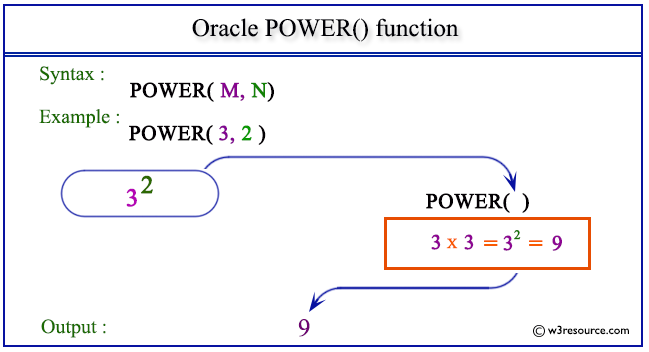Oracle POWER() function
Description
The Oracle POWER function is used to return the value of a number raised to the power of another number. Suppose base M and the exponent is N. The base M and the exponent N can be any numbers, but if M is negative, then N must be an integer.
The function takes any numeric or nonnumeric data type (can be implicitly converted to a numeric data type) as an argument.
If the argument is BINARY_FLOAT, then the function returns BINARY_DOUBLE. Otherwise, the function returns the same numeric data type as the argument
Uses of Oracle POWER() Function
- Exponentiation calculations: Computes the result of raising a number to a specified power.
- Scientific computations: Useful in various scientific and engineering calculations that involve exponential growth or decay.
- Financial modeling: Assists in financial calculations such as compound interest, present and future value computations.
- Mathematical functions: Enhances mathematical operations and complex calculations in database queries.
- Data analysis: Supports data analysis tasks that require power functions for statistical and predictive modeling.
Syntax:
POWER(M,N)
Parameters:
| Name | Description |
|---|---|
| M | A number which is the base of the exponentiation. |
| N | A number which is the exponent of the exponentiation. |
Pictorial Presentation of POWER() function

Example:
The statement below returns the value of 32, i.e. 9.
SELECT POWER(3, 2) FROM dual;
Here is the result.
POWER(3,2)
----------
9
Example: POWER() function with negative value
The statement below returns the value of 4-2, i.e. 0.0625.
SELECT POWER(4,-2) from dual;
Here is the result.
POWER(4,-2)
-----------
.0625
